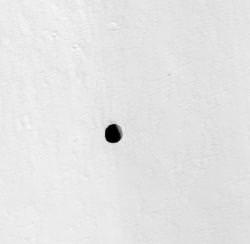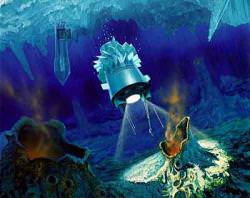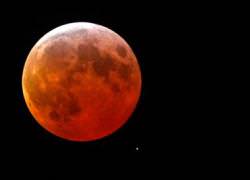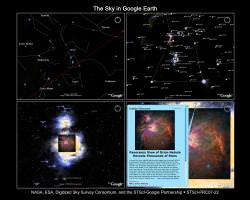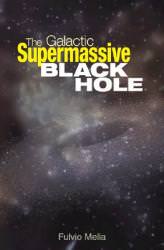Monday, August 27 – While it’s going to be very hard to ignore the presence of the Moon tonight, Neptune is a little more than a degree north, and there may be a visible occultation event. Be sure to check IOTA for the most up-to-date information.
Think having all this Moon around is the pits? Then let’s venture to Zeta Sagittarii and have a look at Ascella – “The Armpit of the Centaur.” While you’ll find Zeta easily as the southern star in the handle of the teapot formation, what you won’t find is an easy double. With almost identical magnitudes, Ascella is one of the most difficult of all binaries. Discovered by W. C. Winlock in 1867, the components of this pair orbit each other very quickly – in just a little more than 21 years. While they are about 140 light-years away, this gravitationally bound pair waltz no further apart than our own Sun and Uranus!
Too difficult? Then have a look at Nu Sagittarii – Ain al Rami, or the “Eye of the Archer.” It’s one of the earliest known double stars and was recorded by Ptolemy. While Nu 1 and Nu 2 are actually not physically related to one another, they are an easy split in binoculars. Eastern Nu 2 is a K type spectral giant that is around 270 light-years from our solar system. But take a very close look at the western Nu 1 – while it appears almost as bright, this one is 1850 light-years away! As a bonus, power up in the telescope, because this is one very tight triple star system!
Tuesday, August 28 – In 1789 on this day, Sir William Herschel discovered Saturn’s moon Enceladus. But if Sir William were around tonight, he’d be napping the early evening hours away as the Moon heads quietly for the Earth’s shadow and a total lunar eclipse is about to occur. For those living in the eastern portions of North and South America, the event will begin not long before dawn. The further west you live, the better your chances of observing totality, with the event in progress at moonrise for observers in far eastern Europe, New Zealand and Australia. No matter if you’re staying out late, or getting up early, a total lunar eclipse is well worth watching!
One of the most breathtaking adventures you can undertake is to watch the Moon through a telescope during an eclipse, both at ingress and egress. Craters take on new dimensions and subtle detail as the shadow races across the surface. If you are lucky enough to see totality… Look at the stars around the Moon. What a wonder it is to behold that which is normally hidden by the light!
Try and judge the Danjon scale for yourself. An L4 is an orange moon with a blue shadow at the edge of the dark umbral cone. L3 is brick red with a grey rim. L2 is deep red, with the umbra very dark with a bright outer edge. L1 is a dark eclipse, where the Moon turns almost brown, while a rare L0 means the Moon becomes almost invisible.
Enjoy your eclipse experience and remember to try your hand at photography!
Wednesday, August 29 – Tonight we’ll hop about two fingerwidths north of Nu Sagittarii to have a look at an open cluster that’s a bit more off the beaten path – NGC 6716. Comprised of around 75 genuine cluster members, this 100 million year old cluster will appear almost like a loose globular cluster, with brighter stars superimposed over the field of a mid-sized telescope in a distinctive horseshoe pattern. At magnitude 7.5 it’s not only within range of larger binoculars, but part of challenge lists as well. Be sure not to confuse it with the far more open Collinder 394 about half a degree southwest. Like all Collinder clusters, it’s a large, sparse open one that only contains a handful of stars in a V pattern.
If you’re still feeling adventurous with a larger scope, drop back and take a much closer look at the Nu Sagittarii system. On the southern edge of eastern Nu 2’s influence, you just might catch globular cluster NGC 6717. If not, keep trying because you need a Palomar globular for your studies! At very near magnitude 10, this loose, class VIII globular was discovered by Sir William Herschel on Aug 7th, 1784, and listed as H III.143. Although it will appear as nothing more than a faint, round unresolved area, it truly is a globular cluster. At one time a small cluster of stars was designated as IC 4802 with surrounding nebulosity – but tonight we’ll log it as Palomar 9!
And if you still can’t find Uranus? Try looking about 1.7 degrees south of the Moon after it rises…
Thursday, August 30 – Today celebrates the Yohkoh Mission, launched in 1991. It was a joint effort of both Japan and the United States to monitor solar flares and the corona. While its initial mission was quite successful, on December 14, 2001 the signal was lost during a total eclipse. Unable to reposition the satellite back towards the Sun, the batteries discharged and Yohkoh became inoperable.
Before the Moon rises tonight, let’s have a look at a very curious planetary nebula located around three fingerwidths (RA 17 13 44.21 Dec -37 06 15.9) west of Lambda Scorpii – NGC 6302, better known as the “Bug” nebula.
With a rough visual magnitude of 9.5, the Bug belongs to the telescope – but it’s history as a very extreme planetary nebula belongs to all. At its center is a 10th magnitude star, one of the hottest known. Appearing in the telescope as a small bowtie, or figure-8 shape, huge amounts of dust exist – very special dust. Early studies showed it consisted of hydrocarbons, carbonates and iron. At one time, carbonates were believed associated with liquid water, and NGC 6302 is one of two such regions known is space to contain carbonates – perhaps in a crystalline form.
Ejected at high speed in a bi-polar outflow, further research has shown the presence of calcite and dolomite, causing scientists to rethink where carbonates might be formed. The processes that formed the Bug may have begun 10,000 years ago – meaning it may have by now stopped losing material. Hanging out about 4000 light-years from our own solar system, we’ll never see NGC 6302 as well as the Hubble Telescope presents its beauty, but that won’t stop you from enjoying one of the most fascinating of planetary nebulae!
Friday, August 31 – Tonight we will begin entering the stream of the Andromedid meteor shower, which peaks off and on for the next couple of months. For those of you in the northern hemisphere, look for the lazy “W” of Cassiopeia to the northeast. This is the radiant – or relative point of origin – for this meteor stream. At times, this shower has been known to be spectacular, but let’s stick with an accepted fall rate of around 20 per hour. These are the offspring of Beila’s Comet, one that split apart leaving radically different streams – much like 73/P Schwassman-Wachmann did last year. These meteors have a reputation for red fireballs with spectacular trains, so watch for them in the weeks ahead.
While we’re waiting, let’s head over to the dark side as we take a look at the Barnard 72 Dark Nebula (RA 17 23 02.00 Dec -23 33 48.0), located about a fingerwidth north of Theta Ophiuchi.
While sometimes dark nebulae are hard to visualize because they are simply an absence of stars, patient observers will soon learn to “see in the dark.” The trained eye often realizes the presence of unresolved stars as a type of background “noise” that we simply take for granted – but not E.E. Barnard. He was sharp enough to realize that there were at least 182 places in the sky where these particular areas of nothingness existed, and he correctly assumed they were due to obscuring dark nebulae.
Unlike bright emission and reflection nebulae, these dark clouds are interstellar masses of dust and gas that remain unilluminated. We would probably not even realize they were there except for the fact that they eradicate star fields we know to be present! It is possible that one day they may form stars of their own, but until that time we can enjoy these objects as splendid mysteries – and one of the most fascinating of all is the “Snake.”
Put in a wide field eyepiece and relax… It will come to you. Barnard 72 is only a few light-years in expanse and a relatively short 650 light-years away. If at first you don’t see it, don’t worry. Like many objects, spotting dark nebulae takes some practice.
Sunday, September 1 – On this day 1859, solar physicist Richard Carrington (who originally assigned sunspot rotation numbers) observed the first solar flare ever recorded. Naturally enough, an intense aurora followed the next day. 120 years later in 1979, Pioneer 11 made history as it flew by Saturn. And where is Saturn? Hanging out with the Sun!
As the nights begin to cool and darken earlier for those in the north, it’s time for us to fly with the “Swan” as the graceful arch of the Milky Way turns overhead. Tonight we’ll start by taking a look at a bright star cluster that’s equally great in either binoculars or telescope – M39.
Located about a fist’s width northeast of Deneb (Alpha Cygni), you will easily see a couple of dozen stars in a triangular pattern. M39 is particularly beautiful because it will seem almost three dimensional against its backdrop of fainter stars. Younger than the Coma Berenices cluster, and older than the Pleiades, the estimated age of M39 is at least 230 million years. This loose, bright galactic cluster is around 800 light-years away. Its members are all main sequence stars and the brightest of them are beginning to evolve into giants.
For more of a challenge, try dropping about a degree south-southwest for NGC 7082 – also known as H VII.52. While it is a less rich, less bright and far less studied open cluster, at magnitude 7.5 it is within range of binoculars, and is on many open cluster observing lists. With only a handful of bright stars to its credit, larger telescopes are needed to resolve out many of the fainter members. Be sure to mark your notes for both objects!

